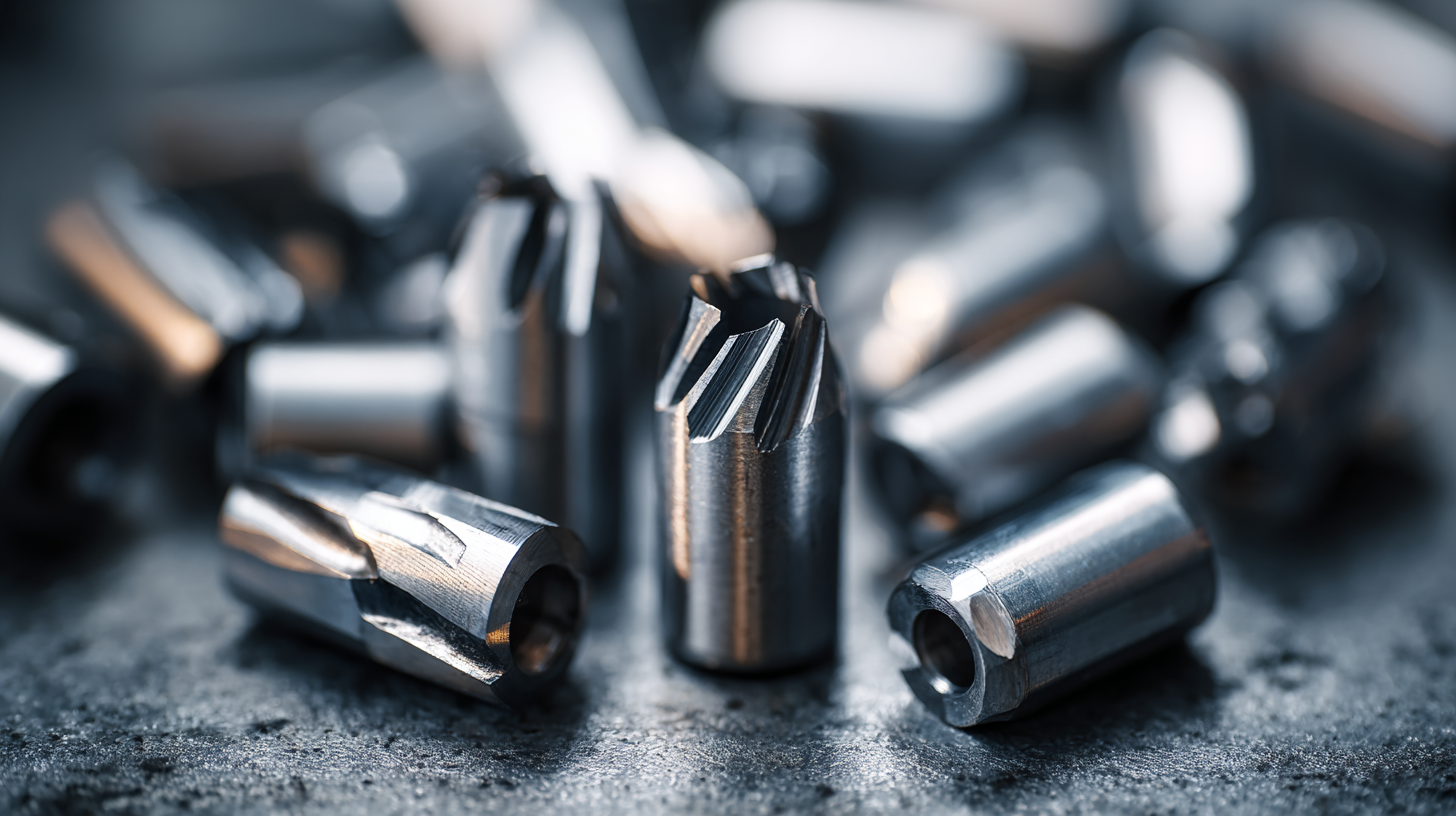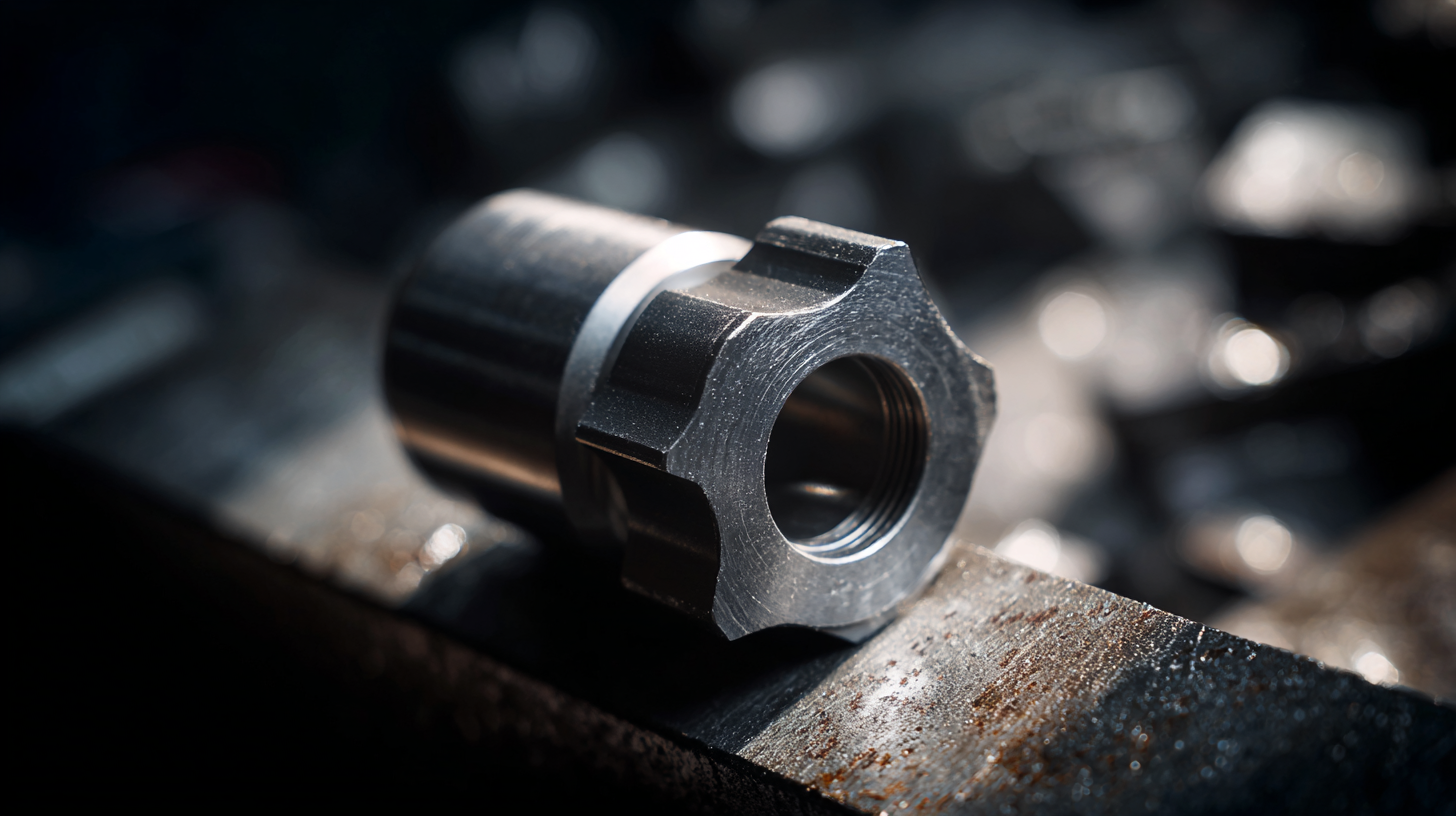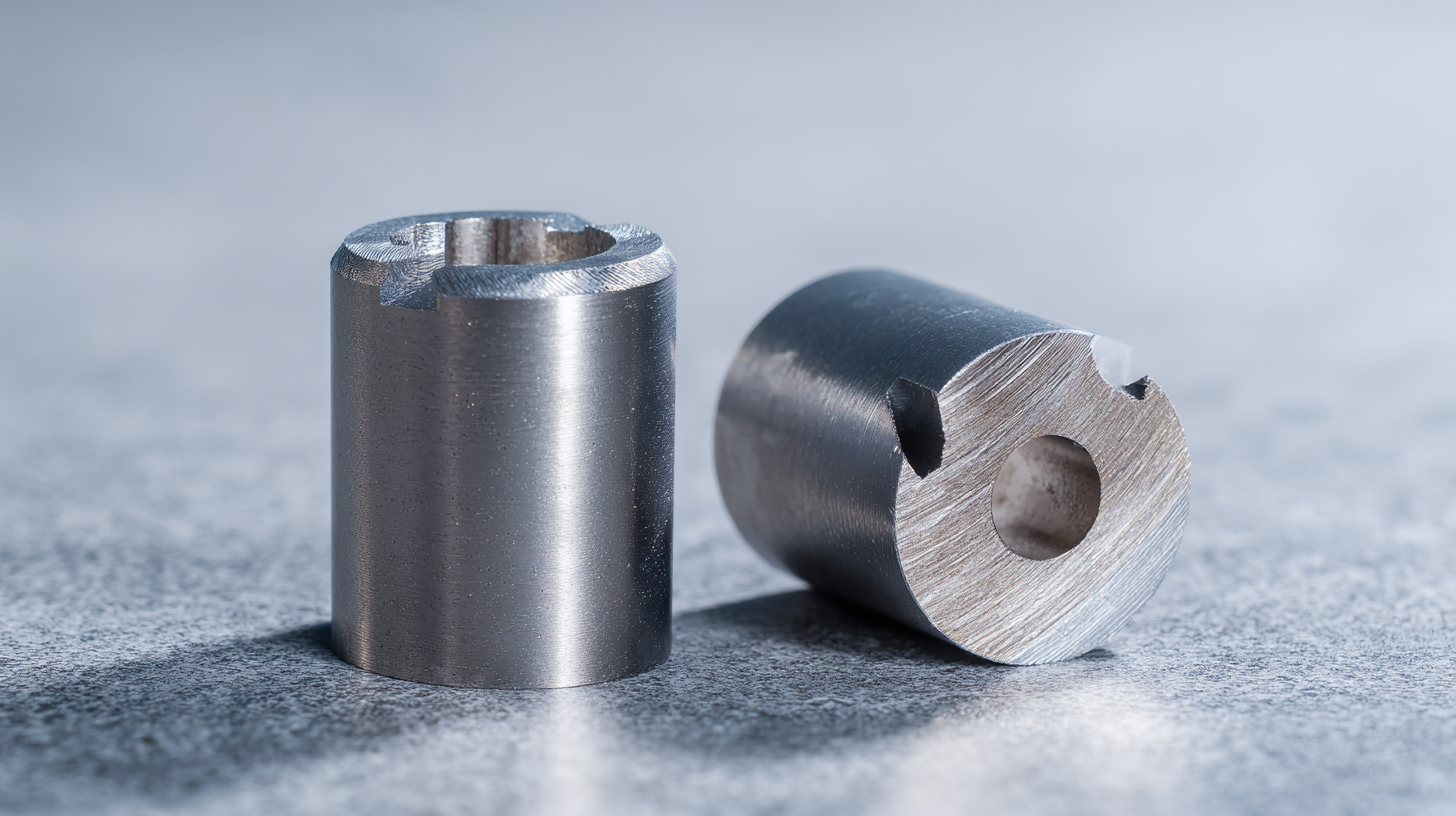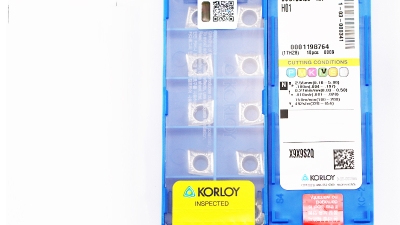How to Choose the Best Carbide Insert for Aluminum Machining
Table of Contents
- Key Factors to Consider When Selecting Carbide Inserts for Aluminum
- Understanding Different Types of Carbide Inserts for Aluminum Machining
- Essential Tips for Optimizing Tool Life in Aluminum Machining
- How Geometry Affects Performance: Choosing the Right Insert Shape
- Material Coatings: Enhancing Performance for Aluminum Machining Applications
- The Importance of Cutting Conditions in Carbide Insert Selection
- Maximize Precision Machining: A Deep Dive into Korloy CCGT Inserts for CNC Aluminum Processing
- FAQS
- Conclusion
- Related Posts
When it comes to precision machining, picking the right tools really makes a difference—it's all about boosting efficiency and getting that smooth, high-quality surface finish.
 And here’s the thing: Jinan Terry CNC Tool Limited Company, a top player in exporting CNC cutting tools out of China, totally gets that the demand for top-notch tooling, especially for aluminum work, is climbing quickly.
Recent industry reports show that using carbide inserts for aluminum has skyrocketed, and it’s projected to hit around $2.5 billion by 2027. That’s mainly thanks to advances in manufacturing tech and the growing push for lightweight materials across different industries.
If you’re in manufacturing, understanding what makes carbide inserts for aluminum so effective is pretty crucial if you want to streamline your production and cut costs.
In this blog, I’ll walk you through some key tips on how to pick the best carbide inserts for aluminum machining—so your operations can really unlock what this versatile material can do for you.
And here’s the thing: Jinan Terry CNC Tool Limited Company, a top player in exporting CNC cutting tools out of China, totally gets that the demand for top-notch tooling, especially for aluminum work, is climbing quickly.
Recent industry reports show that using carbide inserts for aluminum has skyrocketed, and it’s projected to hit around $2.5 billion by 2027. That’s mainly thanks to advances in manufacturing tech and the growing push for lightweight materials across different industries.
If you’re in manufacturing, understanding what makes carbide inserts for aluminum so effective is pretty crucial if you want to streamline your production and cut costs.
In this blog, I’ll walk you through some key tips on how to pick the best carbide inserts for aluminum machining—so your operations can really unlock what this versatile material can do for you.
Key Factors to Consider When Selecting Carbide Inserts for Aluminum
When you're choosing carbide inserts for machining aluminum, there are a few important things to keep in mind if you wanna get the best performance and quality. First off, the shape of the insert really matters.
Inserts with sharp edges and the right angles can help make better chip formation and cut down on the forces needed — especially since aluminum is pretty soft, so this makes a big difference. Also, don’t overlook the coating on the insert; it can make a huge difference by enhancing wear resistance and reducing friction. That means your tools last longer and the surface finish of your parts gets way better.
Another thing to consider is which aluminum alloy you're working with. Different alloys are easier or harder to machine, so it’s super helpful to know the specifics of the material. For example, high-strength alloys might need tougher inserts because they wear out faster, whereas softer alloys could work just fine with inserts that cut more easily. And hey, sustainability's becoming a big deal in machining too — using inserts that are designed to be more eco-friendly doesn't just boost efficiency but also shows you're on board with responsible manufacturing practices. All this stuff adds up to making your machining process smoother and, honestly, more satisfying in the long run.
Understanding Different Types of Carbide Inserts for Aluminum Machining
So, when you're trying to pick out the best carbide insert for machining aluminum, it’s pretty important to get a good understanding of the different types out there. Aluminum alloys like LM25 are super popular across various industries, mainly because they’re lightweight but still pretty strong. Recent research actually shows that using the right kind of inserts can really boost your machining efficiency and make your tools last longer. Especially for aluminum, using carbide inserts designed specifically for these materials can give you a better surface finish and help prevent your tools from wearing out too quick—that’s a big deal when working with these tricky alloys.
Now, the geometry and coatings on these inserts can make a noticeable difference too. For instance, textured cutting tools combined with some high-tech lubrication? They actually help cut better by cutting down friction and heat. And lately, diamond (PCD) and ceramic composite inserts have become pretty popular since they’re super durable and great for machining aluminum composites. Plus, with the rise of machine learning, companies are now able to predict things like thrust forces during machining—talk about optimizing your tools! All these innovations in tool materials and performance are really pushing the boundaries, making aluminum machining faster and more efficient than ever.
How to Choose the Best Carbide Insert for Aluminum Machining
| Insert Type | Coating | Feed Rate (mm/rev) | Cutting Speed (m/min) | Application |
|---|---|---|---|---|
| General Purpose | Uncoated | 0.1 - 0.3 | 200 - 300 | Roughing |
| High-Speed | TiAlN Coated | 0.2 - 0.5 | 250 - 400 | Finishing |
| Chip Breaker | TiN Coated | 0.15 - 0.35 | 180 - 280 | Medium Cutting |
| Positive Rake | CVD Coated | 0.1 - 0.25 | 300 - 450 | Profiling |
Essential Tips for Optimizing Tool Life in Aluminum Machining
When it comes to machining aluminum, one of the biggest deals is really focusing on how to make your tools last longer. Honestly, picking the right insert geometry can make a huge difference. For example, inserts with a thicker cutting edge are generally stronger and more durable — perfect when you're running at high speeds. Also, opting for a positive rake angle can really smooth things out, helping chips flow better and taking some thermal stress off your tools.
Another thing that can help squeeze more life out of your tools is tweaking your cutting parameters. Things like the cutting speed, feed rate, and how deep you cut matter a lot. With aluminum, generally cranking up the speed works well—but you gotta find that sweet spot with the feed rate to prevent unnecessary wear. Don’t be afraid to experiment a bit—play around with different combos until you find what keeps your tools going longer without sacrificing productivity. And yes, regular inspections are key. Catching early signs of wear means you can make adjustments before things get out of hand.
And hey, don’t forget about coolant! Good lubrication isn’t just for smooth cuts—it also helps cool things down and reduces friction. Choosing the right coolant system can seriously extend the life of your carbide inserts, keeping performance consistent and saving you from frequent tool changes.
Aluminum Machining: Carbide Insert Tool Life Analysis
How Geometry Affects Performance: Choosing the Right Insert Shape
 When you're picking out a carbide insert for machining aluminum, the shape of the insert really matters for how well it performs. Different shapes can totally change how smoothly your cuts go, the finish you get on the surface, and how long your tool lasts. For example, if you're doing detailed cuts or working with tight tolerances, a sharper corner is usually the way to go—it gives you that precision you'd want for complex parts. On the flip side, inserts with rounded edges are better suited for roughing jobs—they’re less likely to chip and handle heavy cutting better, so your tool stays in shape longer.
When you're picking out a carbide insert for machining aluminum, the shape of the insert really matters for how well it performs. Different shapes can totally change how smoothly your cuts go, the finish you get on the surface, and how long your tool lasts. For example, if you're doing detailed cuts or working with tight tolerances, a sharper corner is usually the way to go—it gives you that precision you'd want for complex parts. On the flip side, inserts with rounded edges are better suited for roughing jobs—they’re less likely to chip and handle heavy cutting better, so your tool stays in shape longer.
Also, don’t forget about the rake angle; it’s another key factor. A positive rake angle helps with chip flow and lowers the cutting forces, which is super helpful when working with softer aluminum types. On the other hand, a negative rake angle can be a real lifesaver for harder aluminum alloys—it keeps the tool stable and gives you better control during machining. Bottom line: getting a good grasp of these geometric details really helps machinists make smarter choices, leading to better performance and efficiency when working with aluminum—things just run smoother that way.
Material Coatings: Enhancing Performance for Aluminum Machining Applications
When you're working with aluminum machining, picking the right carbide insert can really make a difference in how smoothly and efficiently things go. One big thing to think about is the coating on the insert. Coatings like titanium aluminum nitride (TiAlN) or aluminum titanium nitride (AlTiN) are actually game-changers—they boost cutting performance by making the tool more resistant to wear and better at handling heat. Basically, these coatings help the insert keep up with the high speeds and feeds common in aluminum work, so you get more done and it lasts longer.
Plus, the coating you choose doesn't just impact durability—it can also affect the finish of your parts. If you need a super smooth surface, coated inserts can help reduce oxidation and stop built-up edge (BUE), giving you a cleaner, nicer finish. There are even coatings made specifically for different types of aluminum alloys, which means you can really fine-tune your process based on the material you're working with. All in all, picking the right coated carbide insert can help you work more efficiently and get better quality parts. It’s all about finding that sweet spot where performance and part quality meet!

The Importance of Cutting Conditions in Carbide Insert Selection
When you're picking carbide inserts for machining aluminum, it's super important to understand the cutting conditions. Things like cutting speed, feed rate, and how deep you're cutting make a big difference in how well everything works out. According to a report from the International Journal of Advanced Manufacturing Technology, the ideal cutting speed for aluminum tends to be somewhere between 300 and 600 meters per minute. That's kind of a sweet spot — it helps you get the most material off without wearing out your tools too fast. Basically, you wanna make sure the cutting setup matches what the carbide insert can handle.
Also, don’t forget about the shape and coating of the insert. These should be tailored to your specific machining needs. Studies show that inserts with sharper edges and coatings like TiAlN or TiCN work really well for high-speed aluminum cutting. They’re better at resisting heat and friction, which means your tools last longer. In fact, research from the American Society for Precision Engineering says that using the right insert can boost tool life by up to 40% if you get the cutting conditions dialed in. So yeah, it’s not just about the material of the insert itself — making sure it lines up with your machining parameters is key to getting the best results when machining aluminum.
Maximize Precision Machining: A Deep Dive into Korloy CCGT Inserts for CNC Aluminum Processing
In the realm of precision machining, choosing the right tools can significantly enhance productivity and part quality, particularly when processing materials like aluminum and copper. One standout option in this field is the Korloy CCGT09T308-AK H01 insert, designed specifically for these applications. The H01 material, known for its high hardness and exceptional wear resistance, makes it an ideal choice for cutting non-ferrous metals. According to recent industry reports, utilizing high-performance inserts can reduce cycle times by up to 20%, providing manufacturers with a competitive edge.
The unique design of the CCGT inserts, which features a groove classified as AK, ensures optimal chip formation and effective swarf removal. This is crucial when machining aluminum, as improper chip management can lead to build-up and compromise the finish quality. Moreover, when paired with the appropriate arbor complexes, users can achieve both efficiency and precision, maximizing the lifespan of their tools and minimizing downtime.
Recent statistics indicate that the demand for aluminum machining continues to grow, driven by its lightweight properties and versatility across various industries, including automotive and aerospace. As companies strive to innovate and improve their machining capabilities, investing in quality tools like the Korloy CCGT inserts becomes imperative to stay ahead in a competitive market.
FAQS
: Carbide inserts specifically optimized for aluminum machining, such as PCD and ceramic composite inserts, are ideal as they enhance surface integrity, reduce tool wear, and improve machining efficiency.
The geometry of the insert, including its shape and rake angle, significantly influences cutting efficiency, surface finish, and tool life; sharper corners are suited for intricate cuts, while rounded edges are better for roughing processes.
Coatings like titanium aluminum nitride (TiAlN) and aluminum titanium nitride (AlTiN) enhance wear resistance and thermal stability, allowing inserts to handle the high speeds involved in aluminum machining.
Different aluminum alloys have unique characteristics; using specialized coatings and inserts designed for those materials can optimize performance, reduce tool wear, and improve the quality of the finished part.
Utilizing textured cutting tools combined with advanced lubrication techniques can reduce friction and heat generation, leading to improved cutting performance in aluminum machining.
Machine learning algorithms are increasingly employed to predict thrust forces during machining operations, aiding manufacturers in selecting the most suitable carbide inserts for their specific challenges.
Positive rake angles facilitate better chip flow and lower cutting forces for softer aluminum, while negative rake angles provide tool stability and control for machining harder aluminum alloys.
By selecting coated carbide inserts that minimize oxidation and prevent built-up edge (BUE), manufacturers can achieve smoother surface finishes critical for part quality.
Conclusion
When you're choosing the best carbide insert for machining aluminum, there are a few important things to keep in mind. These factors really make a difference in how well the tool performs and how long it lasts. Getting a good handle on the different types of carbide inserts out there can really help you pick the right one for your specific project. Also, if you want to make your tools last longer, paying attention to some basic maintenance tips and understanding how the shape or geometry of the insert impacts performance can make a big difference. Picking the right insert shape isn't just about luck—it’s about understanding what works best.
Coatings on the inserts are pretty crucial too—they can boost their effectiveness when working with aluminum. And don’t forget, paying attention to the cutting conditions will help you choose the best insert for the job. As a trusted name in CNC cutting tools, Jinan Terry CNC Tool Limited Company is dedicated to providing high-quality carbide inserts for aluminum, so you can count on getting great results every time.
Blog Tags:

Ethan
-

Phone
-

E-mail
-

Skype

